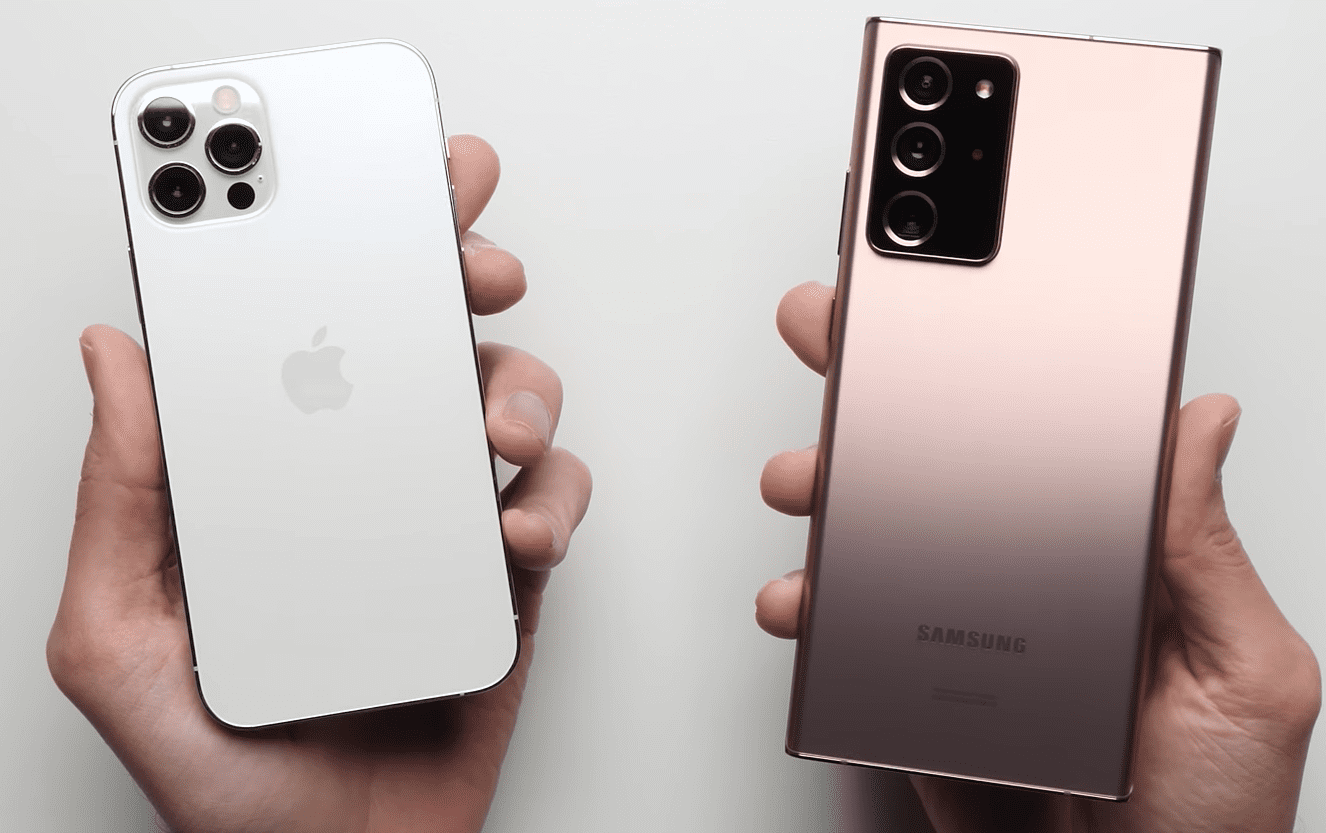The iPhone and Android dominate the smartphone market, with different strengths and weaknesses. The iPhone has a more uniform design language, runs on Apple’s iOS operating system with a sleek and user-friendly experience, and has a tightly integrated ecosystem. Android devices offer a wider range of designs and form factors, can be more customizable, have a more open ecosystem, and offer more experimental and niche apps. Both have excellent cameras, but Android devices offer longer battery life and fast charging, while iPhones are generally more expensive than Android devices, which range from budget options to flagship features at lower points.
iPhone vs. Android: Which Smartphone Reigns Superior?
When it comes to smartphones, two giants dominate the market: Apple’s iPhone and devices running Google’s Android operating system. Both are powerful and expensive devices with many features, but they have different strengths and weaknesses.
Design
Both the iPhone and leading Android devices are beautifully designed with glass and metal bodies, but their designs are different. The iPhone has a more uniform design language and aesthetic, with its iconic home button, rounded corners, and camera bump. Android devices, on the other hand, offer a wider variety of designs and form factors, ranging from the curved Samsung Galaxy S20 to the boxy Google Pixel 5.
Operating System
The iPhone runs on Apple’s proprietary iOS operating system, which offers a sleek and user-friendly experience. iOS is known for its fluid animations, intuitive gestures, and tight integration with Apple’s ecosystem. Android, on the other hand, is an open-source operating system, which means device manufacturers can customize it to fit their needs. This results in a wider range of user experiences and a more customizable interface, although it can also lead to fragmentation and slower software updates.
Apps and Ecosystem
Apple’s App Store and Google’s Play Store both offer millions of apps, but there are some differences in the apps available on each platform. Apple’s strict review process means that apps on the App Store are generally more polished and secure, while Google’s more open approach can lead to more experimental and niche apps. Apple’s ecosystem is also tightly integrated, with features like AirDrop and iMessage that work seamlessly between devices. Android’s ecosystem is more open, with features like Google Assistant and Google Pay that work across a wide range of devices and platforms.
Camera
The camera is one of the most important features of a smartphone, and both the iPhone and Android devices offer excellent cameras. Apple’s latest iPhones have some of the best cameras on the market, with features like Night Mode and Deep Fusion that can capture stunning photos in low light. Android devices like the Google Pixel 5 and Samsung Galaxy S21 also have excellent cameras, but each device has its own strengths and weaknesses. For example, the Pixel 5 has impressive low-light performance, while the S21 has a versatile zoom lens.
Battery Life
Battery life is another important factor to consider when choosing a smartphone. Apple’s iPhones generally have good battery life, but they lag behind some Android devices in this area. Android devices like the Samsung Galaxy S21 and Google Pixel 5 offer all-day battery life and fast charging, so you can get more done without worrying about your battery dying. However, there are some Android devices with weaker battery life, so it’s important to do your research before making a purchase.
Price
Price is a major consideration for many smartphone buyers, and there is a wide range of devices available at different price points. Apple’s iPhones are generally more expensive than Android devices, with the latest iPhone 12 starting at $699 and going up to $1,399 for the iPhone 12 Pro Max. Meanwhile, Android devices like the Google Pixel 5 and OnePlus 8T offer flagship-level features at a lower price point, with prices starting at around $699 and $749, respectively. There are also many budget Android devices available for under $200, making it a more accessible option for some consumers.
Conclusion
Choosing between an iPhone and Android device ultimately comes down to personal preference and priorities. If you value a sleek design, intuitive user experience, and tight integration with Apple’s ecosystem, the iPhone may be the best choice for you. If you prefer a more customizable interface, open ecosystem, and innovative features like Night Sight or Google Assistant, an Android device might be the way to go. Whatever you choose, both iPhone and Android devices offer powerful features and technology that can help enhance your daily life.
